
Embark on a Flavorful Journey: Unveiling Italy’s Irresistible Recipes
Get ready for a culinary escapade that transcends borders and brings the heart of Italy to your kitchen. In this delightful adventure, we not only share must-try recipes but also encourage you to savor these dishes in the enchanting ambiance of local kitchens across Italy. Join us on this delectable journey, where the essence of Italian cuisine unfolds, tantalizing your taste buds and stirring a love for authentic flavors.
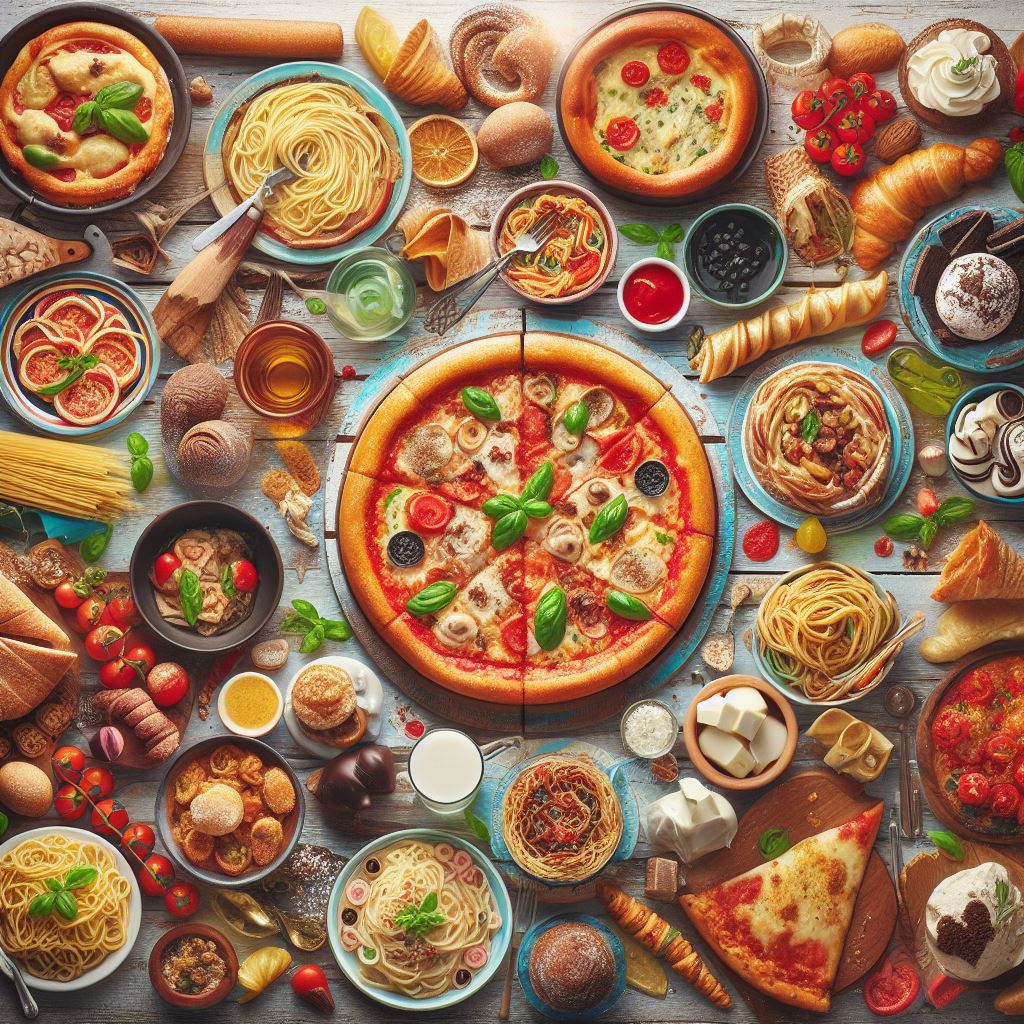
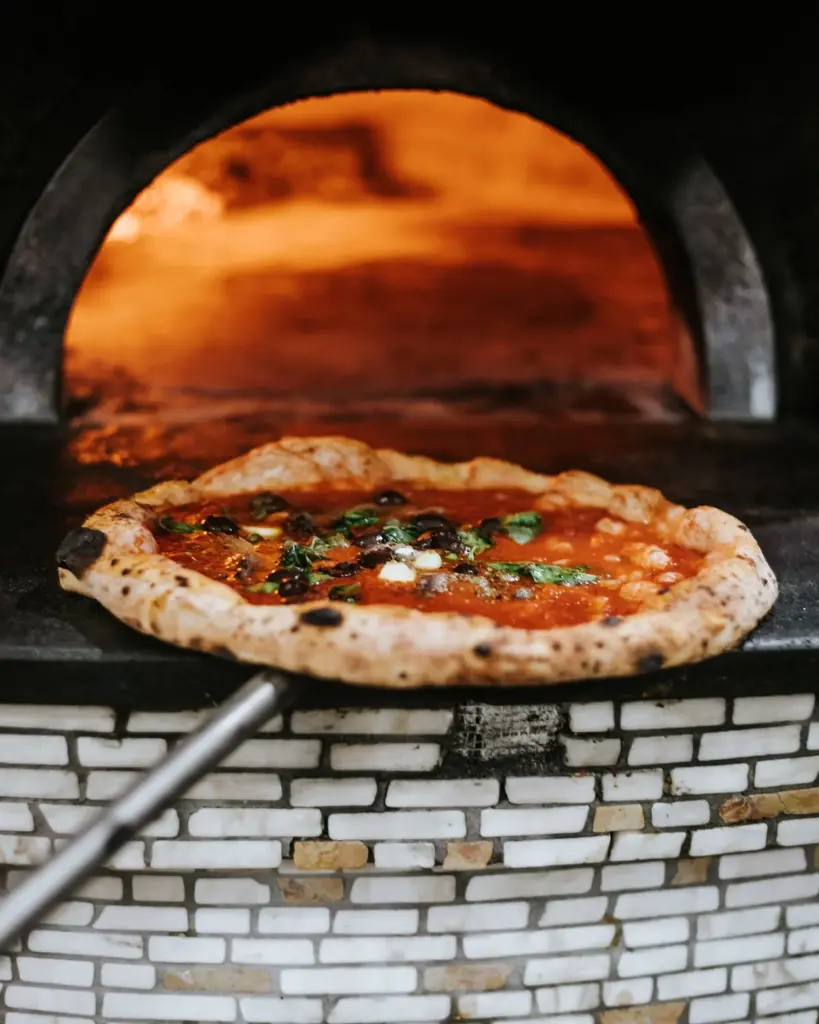
Discover Traditional Italian Eateries: A Culinary Voyage Across Regions
Northern Delights:
In the northern regions of Italy, discover quaint trattorias and charming ristorantes that celebrate the rich culinary heritage of cities like Milan, Turin, and Bologna. Trattoria della Lanterna, nestled in the heart of Milan, is renowned for its Risotto alla Milanese, a saffron-infused masterpiece. For a taste of Bologna’s culinary treasures, Osteria dell’Orsa serves up traditional dishes like Tagliatelle al Ragù, capturing the essence of Emilian cuisine.
Central Charms:
As you venture to the central regions, be enchanted by the romantic streets of Florence and the timeless allure of Rome. La Giostra, located near the iconic Piazza Santa Croce in Florence, enchants diners with its Tuscan specialties, including the celebrated Bistecca alla Fiorentina. In Rome, Da Enzo al 29 captures the essence of Roman trattorias, serving classic dishes like Cacio e Pepe and Saltimbocca alla Romana.
Southern Gems:
The southern coast of Italy boasts a culinary tradition deeply influenced by the sun-soaked landscapes of Naples, Amalfi, and Sicily. In Naples, savor the perfect Neapolitan pizza at L’Antica Pizzeria da Michele, a historic pizzeria dating back to 1870. For a taste of Sicilian delights, Il Barcaiolo in Taormina offers a seafood extravaganza with stunning views of the Mediterranean.
Hidden Gems in Small Villages:
The true magic of Italian cuisine often lies in the undiscovered gems hidden in small villages. In the charming village of Montepulciano, Tuscany, Osteria Acquacheta is a local favorite, serving hearty dishes like Pappa al Pomodoro and wild boar stew. The village of Matera, known for its ancient cave dwellings, hosts Osteria Pico, where you can savor handmade orecchiette and other Apulian specialties.
Locanda Locales:
Experience the warmth of Italian hospitality in family-run locandas, where the emphasis is on creating a welcoming atmosphere. In the hills of Piedmont, Locanda del Pilone combines the beauty of the Langhe region with exquisite dishes like Tajarin al Tartufo. On the Amalfi Coast, Locanda Costa Diva offers a seaside retreat paired with local delicacies such as Spaghetti alle Vongole.
Capturing Culinary Traditions:
These traditional eateries capture the very essence of Italy’s culinary traditions, preserving recipes passed down through generations. Each dish tells a story of local ingredients, time-honored techniques, and the passion that defines Italian cooking. As you explore these renowned establishments, you not only savor exquisite flavors but also become part of a culinary narrative that has shaped Italy’s cultural identity.
Capturing Culinary Traditions: Embark on Your Culinary Journey
Discover a selection of authentic recipes inspired by these culinary treasures. Whether you choose to recreate these dishes in your kitchen or experience them in a traditional Italian restaurant, these recipes offer a taste of the rich tapestry that is Italian cuisine. Join us on this gastronomic voyage, and let the authenticity of traditional Italian eateries enchant your palate and soul.
Risotto alla Milanese
Please note that this recipe is for informational purposes only and should not be used as a substitute for professional advice.
Italië.com is not responsible for any damage or harm that may result from following this recipe.
Ingredients: 1 cup Arborio rice 1/2 cup dry white wine 6 cups chicken broth 1/4 cup butter 1/4 cup grated Parmesan cheese 1/4 teaspoon saffron threads 1/2 teaspoon salt 1/4 teaspoon black pepper Instructions Heat the butter in a large saucepan over medium heat. Add the onion and cook until softened, about 5 minutes. Add the rice and stir to coat with the butter. Cook for 1 minute more. Add the wine and cook until absorbed, about 2 minutes. Add 1 cup of the broth and cook, stirring constantly, until the broth is absorbed. Continue adding the broth, 1 cup at a time, stirring constantly, until the rice is cooked through and the risotto is creamy, about 20 minutes total. Stir in the Parmesan cheese, saffron threads, salt, and pepper. Serve immediately. Tips For a richer flavor, use brown butter instead of regular butter. To make the risotto ahead of time, cook it until it is just al dente. Then, let it cool completely and store it in the refrigerator for up to 24 hours. When you are ready to serve, reheat the risotto in a saucepan over medium heat, stirring constantly, until heated through. To serve the risotto in a traditional Milanese style, garnish it with a sprinkling of chopped parsley. Nutritional information Calories: 600 Fat: 25 grams Saturated fat: 12 grams Cholesterol: 100 milligrams Sodium: 700 milligrams Carbohydrates: 85 grams Fiber: 3 grams Sugar: 4 grams Protein: 20 grams
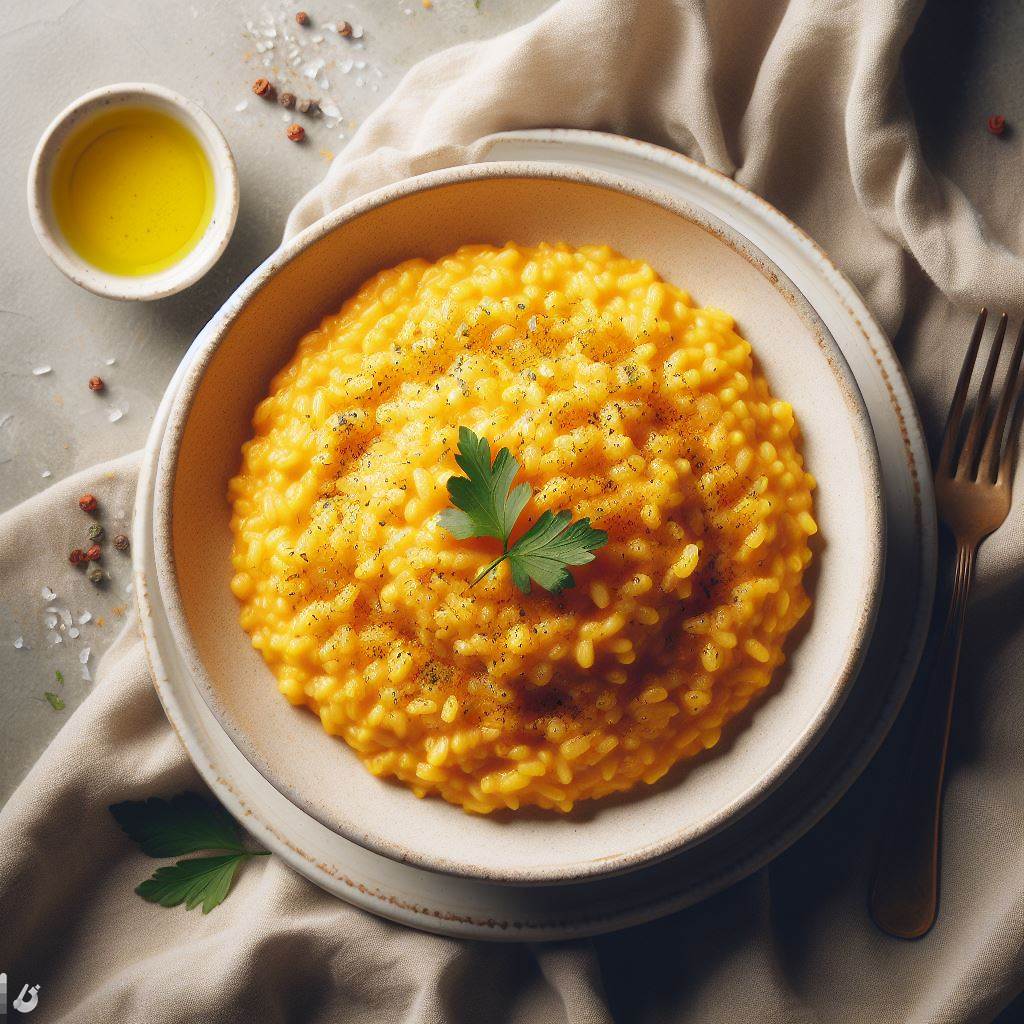
Spaghetti alla Carbonara
Please note that this recipe is for informational purposes only and should not be used as a substitute for professional advice.
Italië.com is not responsible for any damage or harm that may result from following this recipe.
Ingredients: 1 pound spaghetti 1/2 pound guanciale, sliced into thin strips 2 large eggs 1/2 cup grated Parmesan cheese 1/2 teaspoon salt 1/4 teaspoon black pepper Instructions Bring a large pot of salted water to a boil. Add the s
paghetti and cook according to the package directions. Meanwhile, heat a large skillet over medium heat. Add the guanciale and cook until crisp and browned, about 5 minutes. In a large bowl, whisk together the eggs, Parmesan cheese, salt, and pepper. Drain the spaghetti and immediately add it to the skillet with the guanciale. Pour the egg mixture over the spaghetti and toss to coat. Serve immediately. Tips For a richer flavor, use pancetta instead of guanciale. To make the carbonara ahead of time, cook the pasta and drain it. Then, combine the pasta with the guanciale, egg mixture, and Parmesan cheese in a large bowl. Cover the bowl and refrigerate for up to 24 hours. When you are ready to serve, reheat the carbonara in a skillet over medium heat, stirring constantly, until heated through. To serve the carbonara in a traditional Italian style, garnish it with a sprinkling of grated Parmesan cheese. Nutritional information Calories: 800 Fat: 45 grams Saturated fat: 20 grams Cholesterol: 250 milligrams Sodium: 1,200 milligrams Carbohydrates: 90 grams Fiber: 2 grams Sugar: 5 grams Protein: 25 grams This recipe is for a classic spaghetti alla carbonara, made with spaghetti, guanciale, eggs, Parmesan cheese, salt, and pepper. The pasta is cooked al dente and tossed with the guanciale, egg mixture, and Parmesan cheese until creamy and flavorful.
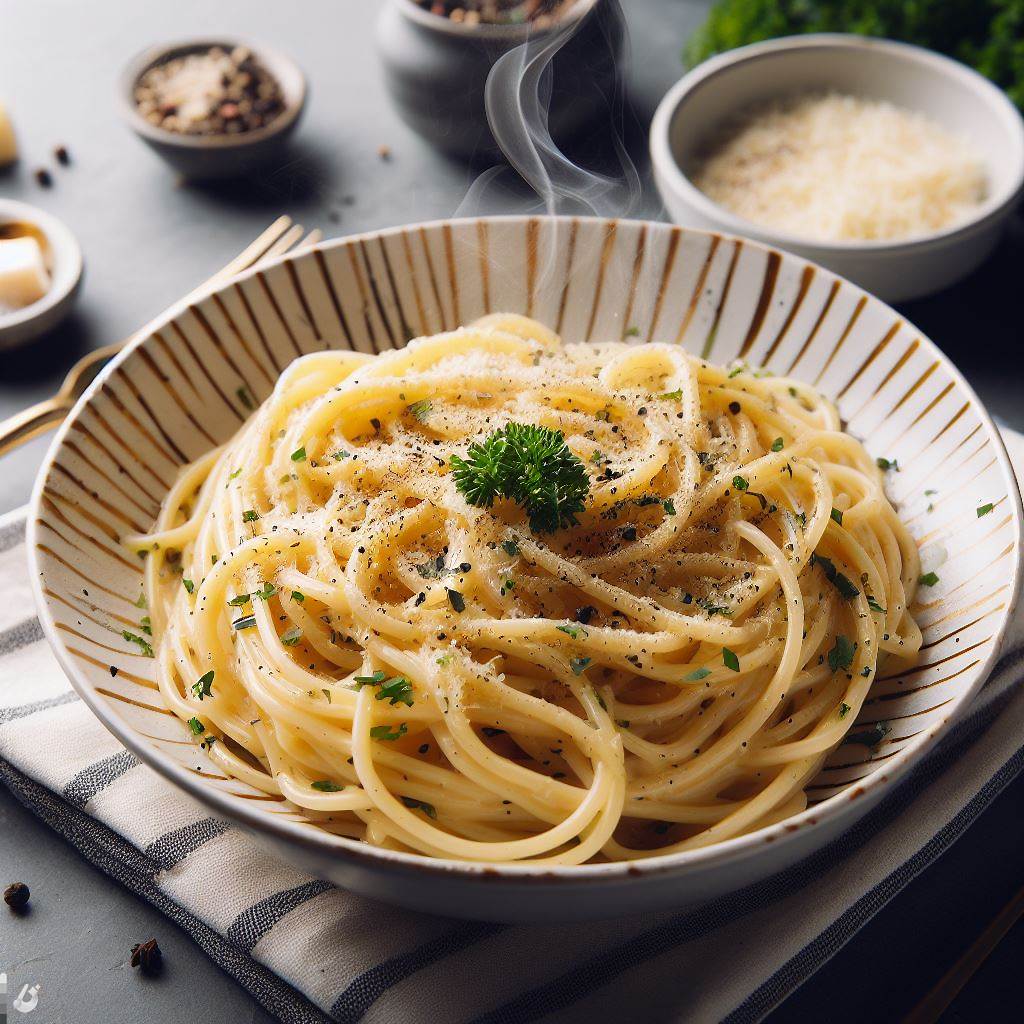
Osso Buco
Please note that this recipe is for informational purposes only and should not be used as a substitute for professional advice.
Italië.com is not responsible for any damage or harm that may result from following this recipe.
Ingredients:
4 veal shanks, about 1 pound each
1/4 cup all-purpose flour
1/4 cup olive oil
1/4 cup butter
1 medium onion, chopped
2 cloves garlic, minced
2 carrots, chopped
2 celery stalks, chopped
1 cup dry white wine
4 cups beef broth
1 (14.5-ounce) can diced tomatoes, undrained
1 teaspoon dried oregano
1/2 teaspoon salt
1/4 teaspoon black pepper
1/4 cup chopped fresh parsley
Instructions
Preheat oven to 325 degrees F (165 degrees C).
Dredge the veal shanks in flour.
Heat the olive oil and butter in a large oven over medium heat. Add the veal shanks and brown on all sides.
Remove the veal shanks from the oven. Add the onion, garlic, carrots, and celery to the oven and cook until softened, about 5 minutes.
Stir in the wine and cook until reduced by half, about 5 minutes.
Return the veal shanks to the oven. Add the beef broth, tomatoes, oregano, salt, and pepper. Bring to a boil, then reduce heat to low and cover.
Bake for 2-2 1/2 hours, or until the veal shanks are tender and falling off the bone.
Stir in the parsley and serve immediately.
Tips
For a richer flavor, use bone-in veal shanks.
To make the osso buco ahead of time, cook it according to the recipe directions and then let it cool completely. Store the osso buco in the refrigerator for up to 2 days. When you are ready to serve, reheat the osso buco in a oven over medium heat until heated through.
To serve the osso buco in a traditional Italian style, garnish it with a sprinkle of grated Parmesan cheese.
Nutritional information
Calories: 500
Fat: 30 grams
Saturated fat: 15 grams
Cholesterol: 175 milligrams
Sodium: 1,000 milligrams
Carbohydrates: 20 grams
Fiber: 4 grams
Sugar: 6 grams
Protein: 40 grams
This recipe is for a classic osso buco, made with veal shanks, flour, olive oil, butter, onion, garlic, carrots, celery, white wine, beef broth, diced tomatoes, oregano, salt, pepper, and fresh parsley. The veal shanks are browned in a Dutch oven and then braised in a flavorful broth until tender and falling off the bone.
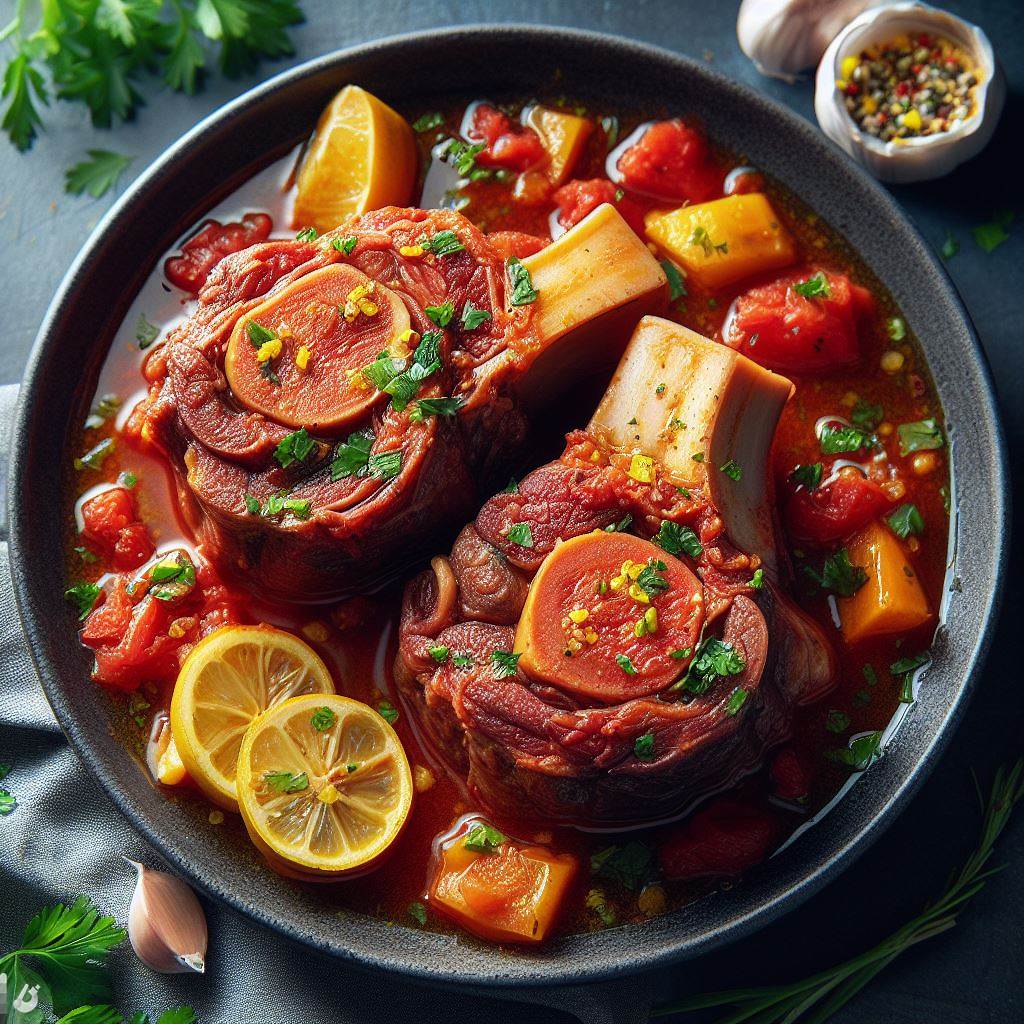
Eggplant Parmesan (Melanzane alla Parmigiana)
Please note that this recipe is for informational purposes only and should not be used as a substitute for professional advice.
Italië.com is not responsible for any damage or harm that may result from following this recipe.
Ingredients: 2 large eggplants, sliced into 1/2-inch thick rounds 1/4 cup salt 1/4 cup all-purpose flour 3 large eggs, beaten 1 cup vegetable oil, for frying 2 cups tomato sauce 1 cup shredded mozzarella cheese 1/2 cup grated Parmesan cheese 1/4 teaspoon dried oregano 1/4 teaspoon salt 1/4 teaspoon black pepper Instructions Sprinkle the eggplant slices with salt and let sit for 30 minutes. Rinse the eggplant slices and pat dry. Dredge the eggplant slices in flour, then dip in the beaten eggs. Heat the vegetable oil in a large skillet over medium heat. Fry the eggplant slices until golden brown on both sides, about 3-4 minutes per side. Drain the eggplant slices on paper towels. Preheat oven to 375 degrees F (190 degrees C). Spread a thin layer of tomato sauce in a 9×13 inch baking dish. Top with a layer of eggplant slices, then sprinkle with mozzarella cheese, Parmesan cheese, oregano, salt, and pepper. Repeat the layers of tomato sauce, eggplant slices, mozzarella cheese, Parmesan cheese, oregano, salt, and pepper until all ingredients are used. Bake for 30-35 minutes, or until the eggplant is tender and the cheese is melted and bubbly. Let stand for 10 minutes before serving. Tips For a richer flavor, use homemade tomato sauce. To make the eggplant Parmesan ahead of time, assemble the casserole and bake it according to the recipe directions. Then, let it cool completely and store it in the refrigerator for up to 2 days. When you are ready to serve, reheat the eggplant Parmesan in a 350 degree F (175 degree C) oven until heated through. To serve the eggplant Parmesan in a traditional Italian style, garnish it with a sprinkle of fresh basil leaves. Nutritional information Calories: 450 Fat: 25 grams Saturated fat: 15 grams Cholesterol: 100 milligrams Sodium: 800 milligrams Carbohydrates: 40 grams Fiber: 5 grams Sugar: 7 grams Protein: 20 grams
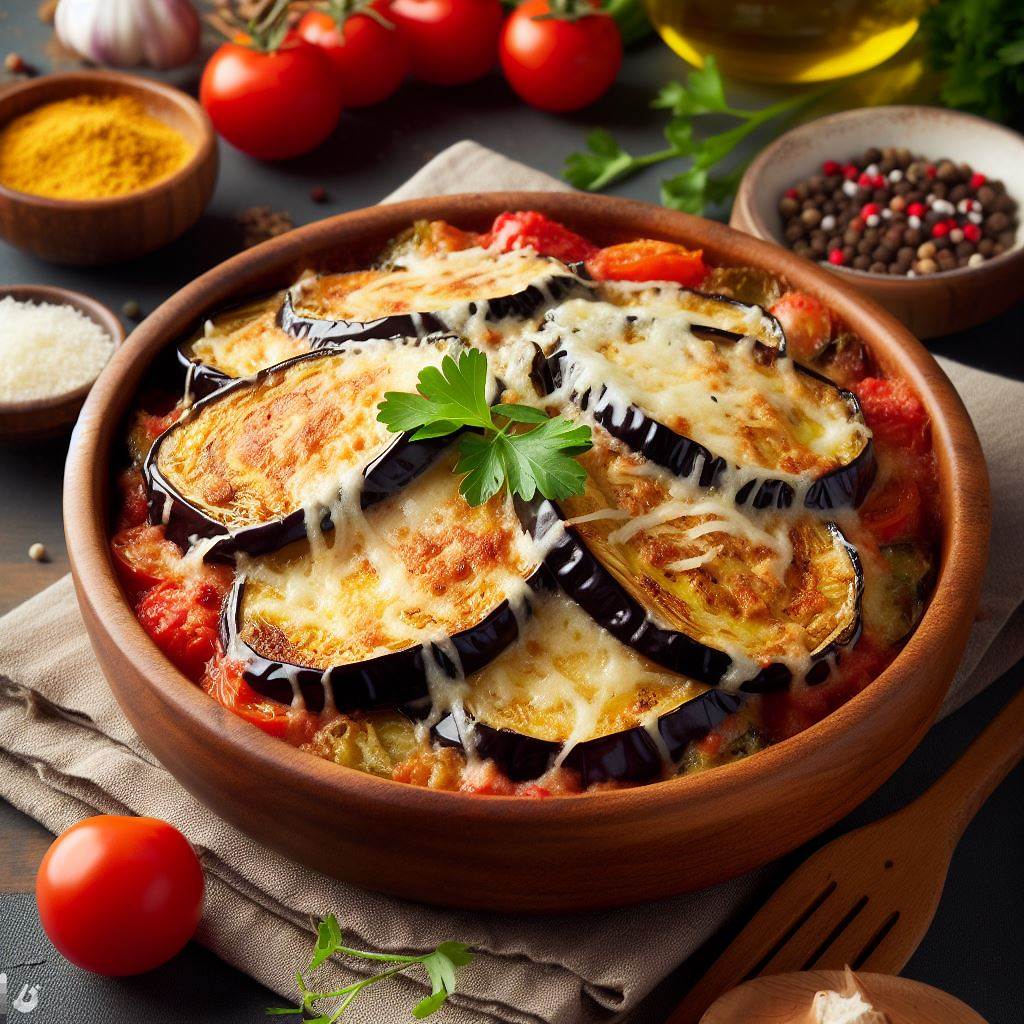
Fettuccine Alfredo
Please note that this recipe is for informational purposes only and should not be used as a substitute for professional advice.
Italië.com is not responsible for any damage or harm that may result from following this recipe.
Ingredients: 1 lb fettuccine pasta ½ cup unsalted butter ½ cup heavy cream ½ cup grated Parmesan cheese Salt and pepper to taste Instructions Bring a large pot of salted water to a boil. Add the fettuccine and cook according to the package directions until al dente. While the pasta is cooking, melt the butter in a large skillet over medium heat. Add the heavy cream and Parmesan cheese to the skillet and stir until the cheese is melted and the sauce is smooth. Season the sauce with salt and pepper to taste. Drain the pasta and add it to the skillet with the sauce. Toss to coat. Serve immediately. Tips For a richer flavor, use a combination of butter and olive oil to melt the cheese. To make the fettuccine Alfredo ahead of time, cook the pasta according to the package directions and drain it. Then, toss the pasta with the sauce and store it in the refrigerator for up to 2 days. When you are ready to serve, reheat the fettuccine Alfredo in a skillet over medium heat until heated through. To serve the fettuccine Alfredo in a traditional Italian style, garnish it with a sprinkle of chopped parsley. Nutritional information Calories: 550 Fat: 30 grams Saturated fat: 18 grams Cholesterol: 125 milligrams Sodium: 450 milligrams Carbohydrates: 55 grams Fiber: 2 grams Sugar: 4 grams Protein: 15 grams This recipe is for a classic fettuccine alfredo, made with fettuccine pasta, butter, heavy cream, Parmesan cheese, salt, and pepper. The pasta is cooked al dente and tossed with the sauce until creamy and flavorful.
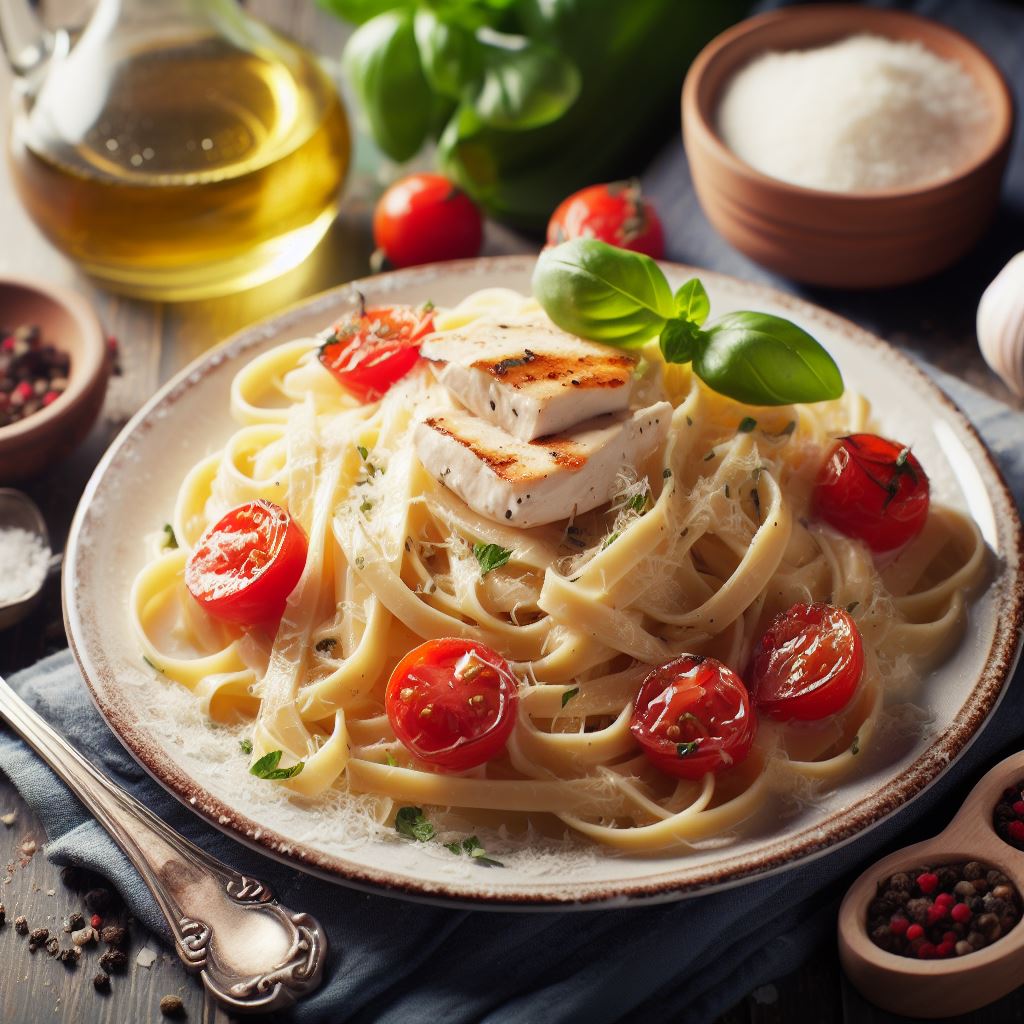
Tiramisu
Please note that this recipe is for informational purposes only and should not be used as a substitute for professional advice.
Italië.com is not responsible for any damage or harm that may result from following this recipe.
Ingredients: 1 cup strong coffee, cooled 1/4 cup liqueur of your choice (such as amaretto, Marsala, or brandy), optional 1 pound mascarpone cheese, softened 1/2 cup granulated sugar 4 large eggs, separated 1/4 cup plus 2 tablespoons unsweetened cocoa powder 1 package ladyfingers (about 30), split in half Freshly grated chocolate, for garnish (optional) Instructions In a shallow dish, combine the coffee and liqueur (if using). Dip half of the ladyfingers into the coffee mixture, letting them soak for just a few seconds on each side. Arrange the soaked ladyfingers in a single layer in the bottom of a 9×13-inch baking dish. In a large bowl, beat the mascarpone cheese and sugar until light and fluffy. In a separate bowl, beat the egg yolks until light and fluffy. Gradually add the egg yolks to the mascarpone mixture, beating until well combined. In another separate bowl, beat the egg whites until stiff peaks form. Gently fold the egg whites into the mascarpone mixture. In a small bowl, whisk together 1/4 cup of the cocoa powder. Gradually add the cocoa powder to the mascarpone mixture, beating until well combined. Spread the mascarpone mixture evenly over the soaked ladyfingers. Sprinkle the remaining 2 tablespoons of cocoa powder over the top of the mascarpone mixture. Cover the dish with plastic wrap and refrigerate for at least 4 hours, or overnight. When ready to serve, garnish with freshly grated chocolate, if desired. Tips For a richer flavor, use homemade coffee instead of store-bought. To make the tiramisu ahead of time, prepare it up to 2 days in advance. Store it covered in the refrigerator. To serve the tiramisu in a traditional Italian style, use espresso-soaked ladyfingers instead of coffee-soaked ladyfingers. Nutritional information Calories: 350 Fat: 20 grams Saturated fat: 12 grams Cholesterol: 210 milligrams Sodium: 150 milligrams Carbohydrates: 35 grams Fiber: 1 gram Sugar: 25 grams Protein: 6 grams This recipe is for a classic tiramisu, made with ladyfingers soaked in coffee and liqueur, a creamy mascarpone filling, and a dusting of cocoa powder. The tiramisu is refrigerated for at least 4 hours before serving, allowing the flavors to meld and the ladyfingers to soften
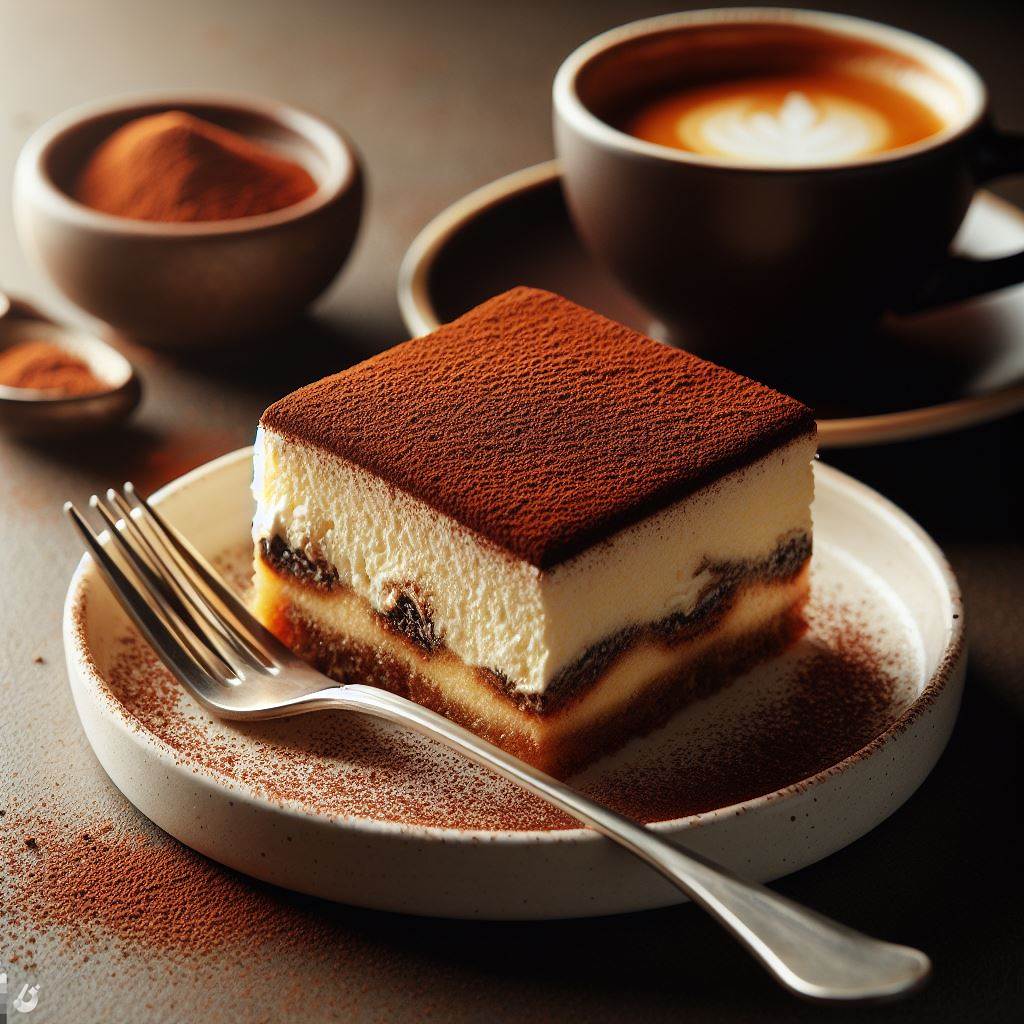
Cannoli
Please note that this recipe is for informational purposes only and should not be used as a substitute for professional advice.
Italië.com is not responsible for any damage or harm that may result from following this recipe.
Ingredients: For the Shells: 2 cups all-purpose flour ¼ cup granulated sugar ½ teaspoon salt 1 large egg ½ cup dry Marsala wine or white wine Vegetable oil for frying For the Filling: 15 ounces whole-milk ricotta cheese, drained ½ cup powdered sugar ½ teaspoon vanilla extract ¼ cup semisweet chocolate chips ¼ cup chopped pistachios ¼ cup chopped candied orange peel ¼ cup chopped maraschino cherries Instructions: For the Shells: In a large bowl, whisk together the flour, sugar, and salt. Add the egg and wine to the flour mixture and stir until a dough forms. If the dough is too dry, add a little more wine. If the dough is too wet, add a little more flour. Knead the dough on a lightly floured surface for 5-10 minutes, or until smooth and elastic. Wrap the dough in plastic wrap and refrigerate for at least 30 minutes. Heat the oil in a large pot over medium-high heat. On a lightly floured surface, roll out the dough into a very thin sheet, about 1/16-inch thick. Cut the dough into 4-inch circles. Working in batches, fry the dough circles in the hot oil until golden brown on both sides, about 30 seconds per side. Remove the fried dough circles to a paper towel-lined plate to drain. To shape the cannoli shells, wrap each fried dough circle around a cannoli form or a wooden dowel, overlapping the edges slightly. Let the shells cool completely on the forms or dowels. For the Filling: In a large bowl, beat together the ricotta cheese, powdered sugar, and vanilla extract until smooth and creamy. Fold in the chocolate chips, pistachios, candied orange peel, and maraschino cherries. Spoon the filling into the cooled cannoli shells. Serve immediately or store in the refrigerator for up to 24 hours. Tips: For a richer flavor, use full-fat ricotta cheese. To make the cannoli ahead of time, prepare the shells and filling up to 24 hours in advance. Store the shells in an airtight container at room temperature, and store the filling in the refrigerator. Fill the shells with the filling just before serving. To serve the cannoli in a traditional Italian style, garnish them with a dusting of powdered sugar. Nutritional information: Calories: 500 Fat: 25 grams Saturated fat: 15 grams Cholesterol: 75 milligrams Sodium: 200 milligrams Carbohydrates: 60 grams Fiber: 2 grams Sugar: 25 grams Protein: 10 grams
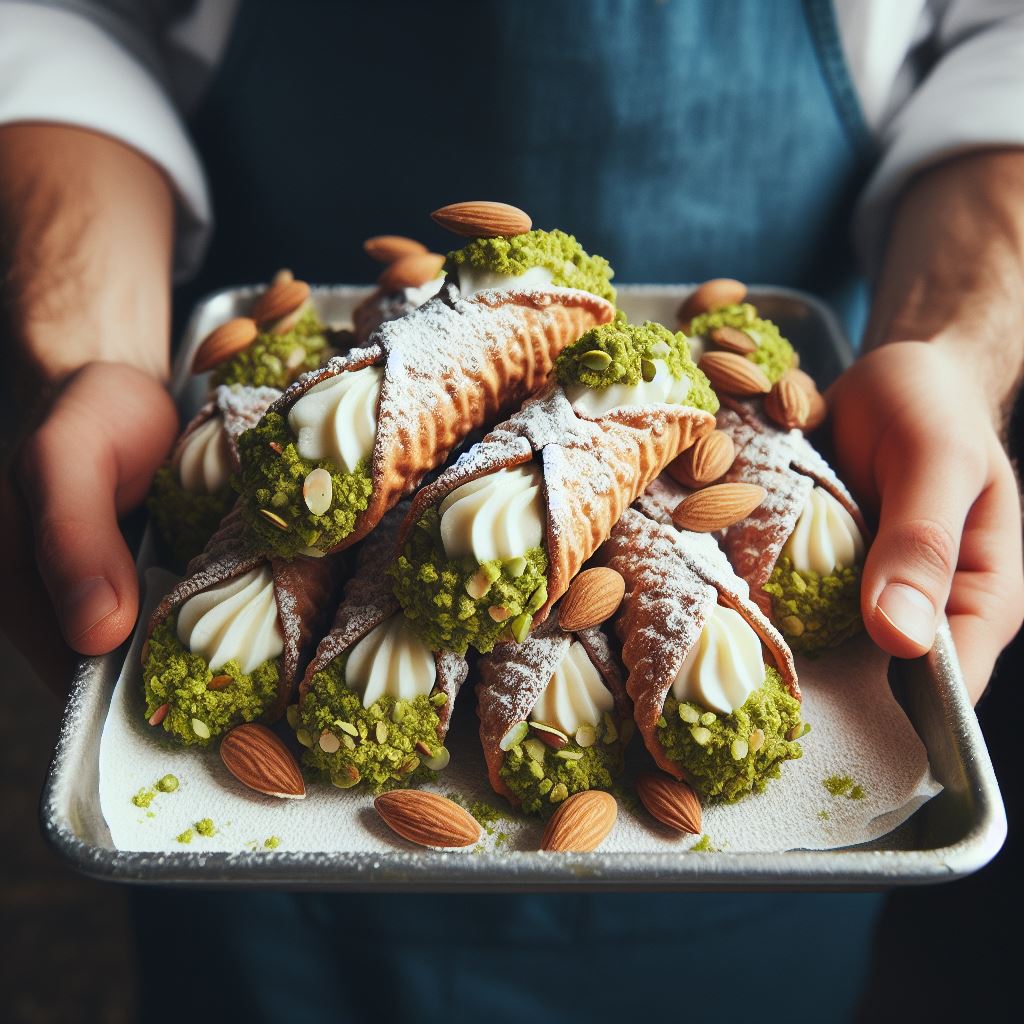
Panna Cotta
Please note that this recipe is for informational purposes only and should not be used as a substitute for professional advice.
Italië.com is not responsible for any damage or harm that may result from following this recipe.
Ingredients: 1 ½ cups heavy cream ½ cup half-and-half ¼ cup granulated sugar 1 ½ teaspoon vanilla extract 2 ½ teaspoons unflavored powdered gelatin Instructions: In a medium saucepan, combine the heavy cream, half-and-half, sugar, and vanilla extract. Heat over medium heat, stirring occasionally, until the sugar is dissolved and the mixture is just simmering. Remove the saucepan from the heat. Sprinkle the gelatin over the hot cream mixture and let sit for 5 minutes. Stir the gelatin mixture until it is completely dissolved. Strain the mixture through a fine-mesh sieve into four 6-ounce ramekins or molds. Refrigerate for at least 4 hours, or overnight, until firm. To serve, run a knife around the edges of the ramekins or molds to loosen the panna cotta. Invert the ramekins or molds onto serving plates. Tips: For a richer flavor, use all heavy cream instead of half-and-half. To make the panna cotta ahead of time, prepare it up to 2 days in advance. Store it covered in the refrigerator. To serve the panna cotta in a traditional Italian style, garnish it with a drizzle of fruit coulis or a sprinkle of fresh berries. Nutritional information: Calories: 250 Fat: 15 grams Saturated fat: 9 grams Cholesterol: 75 milligrams Sodium: 50 milligrams Carbohydrates: 25 grams Fiber: 1 gram Sugar: 15 grams Protein: 5 grams
